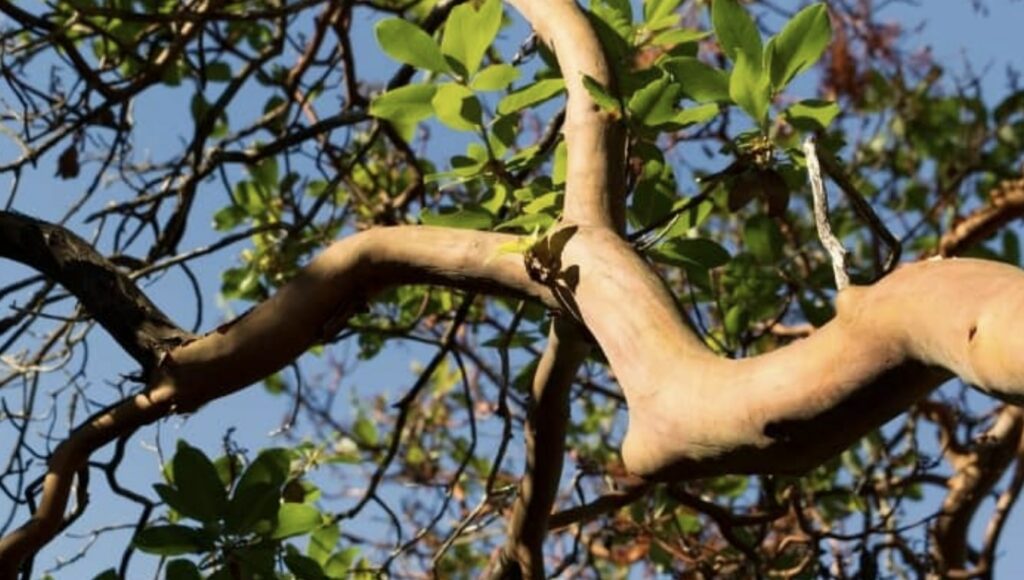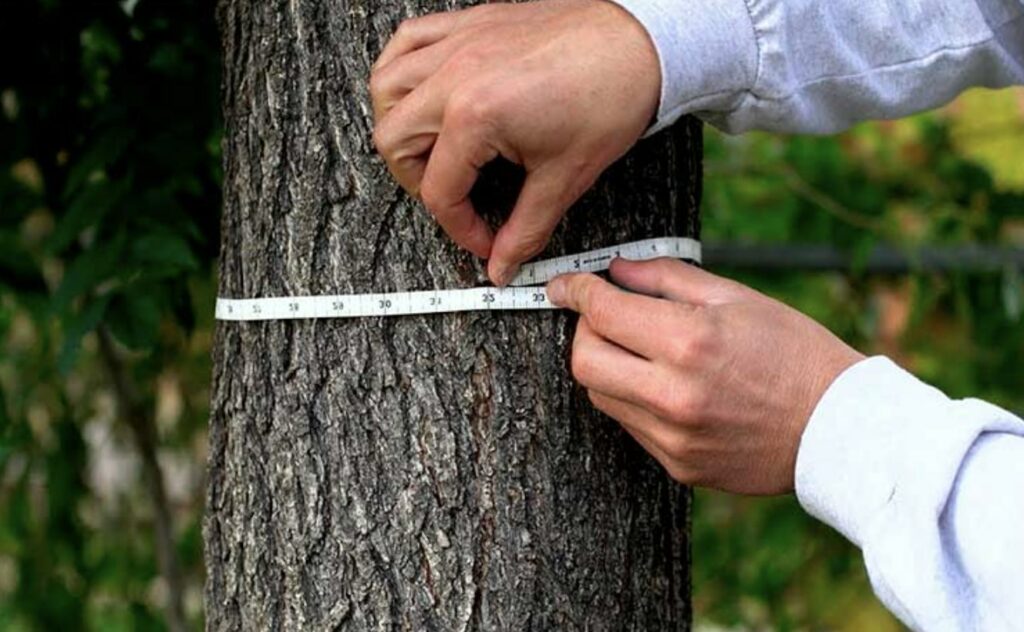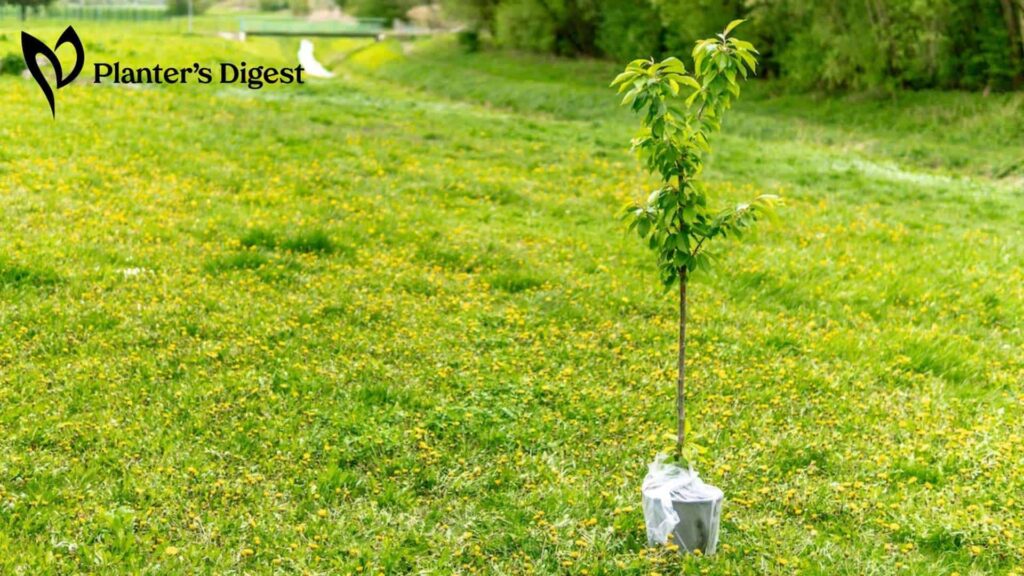
Having a big, well-established tree on your property does wonders at helping make your landscape look more put together. Aside from that, it provides a great amount of shade.
However, it’ll take many years for a tree to reach a jaw-dropping size. So, if you’re on the hunt for ways to boost your tree’s growth, look no further!
From growing practices to beneficial additives, we’ve jotted down several ways to help your tree grow faster. We’ve also answered a couple of FAQs at the end, to boot.
How to Make Trees Grow Faster
To hasten your tree’s growth, you’ll need to first select the right species suitable for the conditions in your zone. You’ll also need to ensure that you’ve prepped a spacious area with fertilized soil.
All that’s left to do is properly care for it by watering enough, pruning regularly, adding mulch and fertilizers, and protecting it from damage.
1. Choose the right species
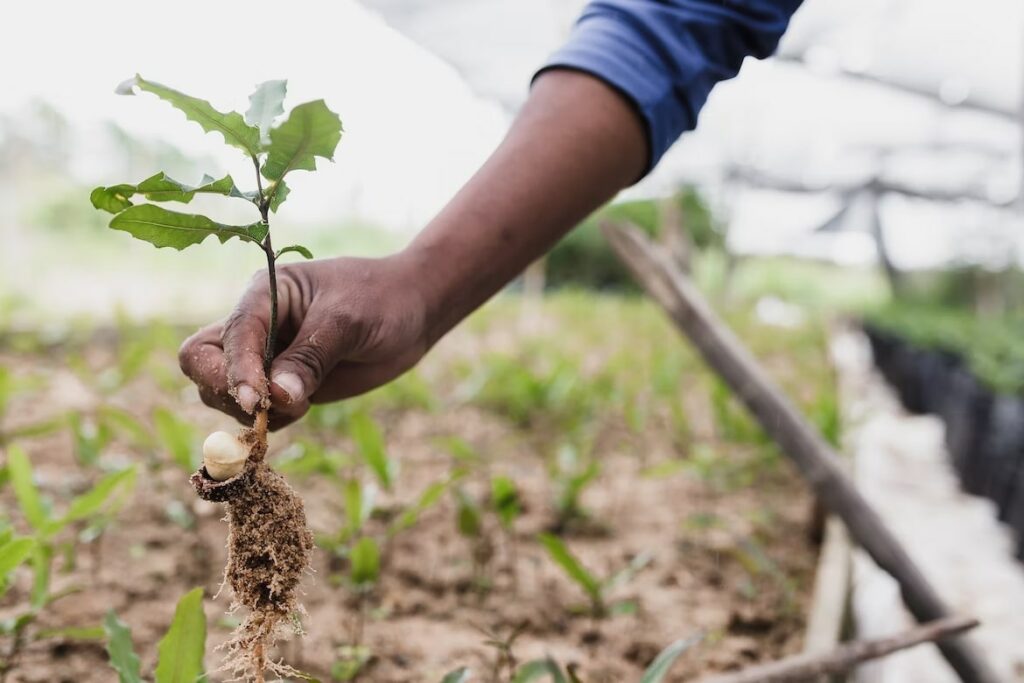
Before anything else, you’ll want to ensure that you select the most appropriate tree species that are suitable for the environmental conditions in your area, type of soil you have, preferred growth rate, and overall look that you’re going for.
These are important factors to consider because a tree won’t be able to grow to its fullest potential when planted in incompatible conditions.
To be able to choose the right types of trees to grow, you’ll want to find out what zone you live in. This way, you’ll have a better idea about its hardiness as far as weather and temperature imbalances are concerned.
If you haven’t heard of a zone before, it’s basically geographical categories classified according to the area’s average and annual temperatures along with several aspects relevant to plant survival.
Also referred to as growing zones and gardening zones, it’s a popular guide and point of reference for gardeners to determine what kinds of plants are most likely to flourish at a specific location.
The USDA Hardiness Zone Map is divided into 11 zones, which are classified depending on the temperature which varies between -60°F to 50°F or -51°C to 10°C.
| Temperature | USDA Zone |
| -50°F to -40°F-45°C to 40°C | 2 |
| -40°F to -30°F-40°C to -34°C | 3 |
| -30°F to -20°F-34°C to -28°C | 4 |
| -20°F to -10°F-28°C to -23°C | 5 |
| -10°F to 0°F-23°C to -17°C | 6 |
| 0°F to 10°F-17°C to -12°C | 7 |
| 10°F to 20°F-12°C to -6°C | 8 |
| 20°F to 30°F-6°C to -1°C | 9 |
| 30°F to 40°F-1°C to 4°C | 10 |
| 40°F to 50°F4°C to 10°C | 11 |
It’s also interesting to note that most seed manufacturers label their packets with a prescribed zone.
Hence, knowing what zone you live in will give you a better idea of what trees are best suited for your climate which will ultimately give your tree the best chance at thriving.
2. Test your soil
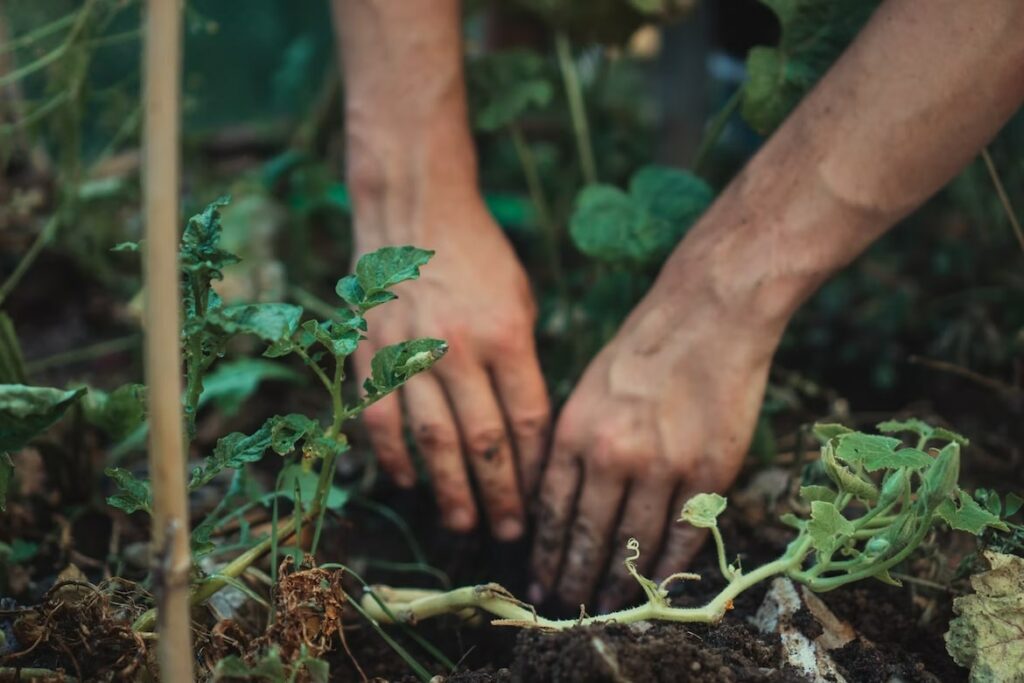
Testing your soil gives you valuable information about its condition that can either make or break your tree’s development.
Understanding how to read your soil test allows you to make the necessary changes to help your plant grow healthier and faster.
Firstly, a soil test tells you what your pH levels are. This, essentially, measures how acidic or alkaline the soil is which, in turn, will determine whether there are nutrient and mineral deficiencies or surpluses.
Too much or little acidity can inhibit your tree’s ability to absorb essential nutrients. Aside from that, it can kill off beneficial bacteria needed to maintain a favorable balance.
An imbalanced soil pH level can also play a role in how effective fertilizers are. This is because the varying levels of acidity and alkalinity can affect the reaction of the soil to additives.
To determine what pH level your soil has, you can conduct a simple soil test at home. Luckily, these are available in most gardening stores and online.
A pH scale runs from 0, which is the most acidic, to 14, which is the most alkaline. Meanwhile, 7 is the neutral mark and is the most ideal pH level for optimal plant growth.
| pH Scale | Point | Meaning | Remedy |
| 1 – 5 | Acidic | The higher the acidity level of your soil, the higher the risk of iron, aluminum, and zinc getting soluble. Too much acidity can also cause rocks in the soil to weather. As it disintegrates, it can release excessive amounts of calcium, potassium, manganese, and magnesium. As a result, these could become toxic to your tree. | 1. Liming the soil Liming involves using agricultural limestone or calcium bicarbonate to stimulate microbial activity and mobilize nutrients in the soil. Simply follow the application instructions. Be sure to break apart large pieces to maximize the beneficial effects. 2. Adding a mix of baking soda and water Mix a gallon of water with a tbsp of baking soda or sodium bicarbonate. You can repeat this every few months, especially if your soil is prone to becoming acidic. 3. Adding organic manure or compost Since manure and recyclables have a neutral pH level, it’ll naturally regularize your soil’s pH level up. |
| 6 – 8 | Neutral | The ideal pH level for optimal plant development | N/A |
| 7-14 | Alkaline | The higher the saline levels of your soil, the higher the calcium carbonate content. This inhibits your tree’s ability to take in nutrients and minerals in the soil. This could also indicate sodic soil issues, inadequate drainage, or high levels of sodium. | 1. Add organic matter To improve the pH level of your soil, you can add organic matter to help healthily increase acidity levels. The natural decomposition will also gradually help enhance air circulation and drainages. 2. Use humic acid Adding humic acid to your soil helps to restore biological activity. It’ll boost mineralization and natural decomposition which can increase the production of organic acids. |
Secondly, a soil test will help you find out what kinds of nutrients are currently present – or the lack thereof.
Knowing what nutrients and minerals your soil needs will help you easily pick out what type of fertilizer to use to address these deficiencies.
While you can get a good idea of the nutrient content in your soil through an at-home test kit, you can get a professional test done for more accurate results.
This is because laboratory techniques can more precisely point out which specific nutrients and minerals your soil lacks and has a surplus of.
It’s interesting to note that some county or council extensions offer these tests for free or at a reasonable price. Hence, it’s worth getting in touch with your local government.
3. Fertilize your soil
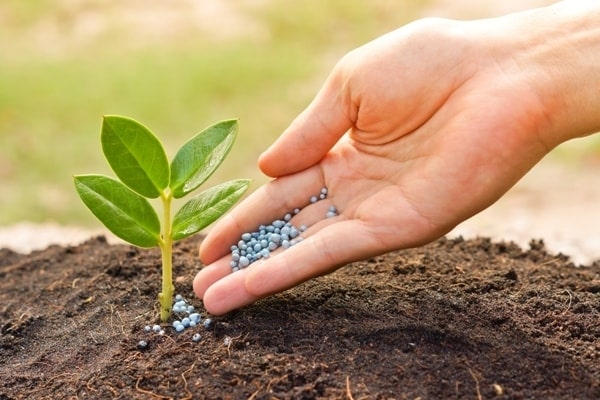
Fruit and vegetable-bearing plants aren’t the only ones that can benefit from fertilizer. It contains a ton of essential nutrients and minerals that are key to helping your tree grow faster, healthier, taller, and heartier.
However, it’s important to know what fertilizer mix will yield the most optimal results. Here’s a comprehensive table of the most common fertilizer ingredients and what they target:
| Ingredient | Target |
| Nitrogen | Improves photosynthesis productionPromotes and restores green colorEncourages healthy stem and leaf developmentBoosts protein contentEnhances plant health |
| Phosphorus | Promotes early root developmentAids in stimulating tillering or development of side shootsIncreases winter hardinessBoosts water use efficiencyImproves stalk and stem strengthQuickens maturity |
| Potassium | Regulates the uptake of carbon dioxide, in turn, boosting photosynthesisImproves drought toleranceBoosts growthIncreases protein contentEncourages growth through enzyme activation |
| Calcium | Promotes greater root mass growthBoosts the absorption of nutrients, minerals, and water from the soilImproves fruit production, quality, and storabilityEnhances overall tree health |
| Magnesium | Promotes the activation of enzymesBoosts chlorophyll productionImproves fruit production, quality, and storabilityHelps regulate the absorption of nutrients, minerals, and water from the soil |
| Sulfur | Enhances the formation of chlorophyllPromotes better growth and developmentIncreases enzyme activationBoosts protein content |
All said, it’s often recommended to get a complete fertilizer that has high N-P-K or Nitrogen-Phosphorus-Potassium content, preferably in 16-4-8, 12-6-6 or 12-4-8 ratios.
Though, it’s important to keep in mind that the results of your soil pH test may require a different dosage.
There are typically two kinds of fertilizers available in gardening centers: fast-release and slow-release.
Fast-release fertilizers are often called water-soluble fertilizers because they’re known to quickly dissolve into the soil, allowing your tree to absorb it through the roots.
You’ll be able to notice results relatively quickly as these fast-acting fertilizers release their nutrients within a short period of time. As a result, they’re great for fixing nutrient deficiencies fast.
However, improper dilution and excessive applications could cause burns on your young trees. Thus, be sure to properly follow the instructions as prescribed.
Meanwhile, slow-release fertilizers dissolve slowly into the soil. They tend to prioritize overall growth and health at a relaxed pace.
Hence, they’re a better option for young trees as they can continuously get a boost of nutrients at a steady rate because they’re less concentrated than fast-release fertilizers.
Nevertheless, both fast-release and slow-release fertilizers can get the job done. Just ensure that you apply them when your tree is rather young to further boost its growth.
4. Ensure your trees have enough space
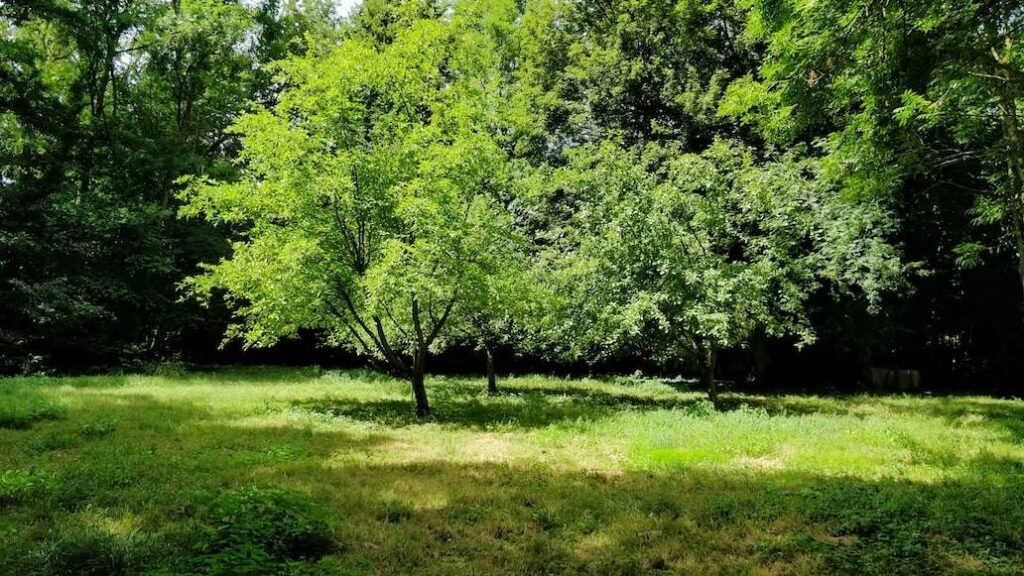
In order for your tree to grow faster and taller, it shouldn’t encounter any hiccups while in its tender years. This entails providing enough space for it to naturally develop.
Did you know that tree roots can grow up to 3 times the height of the entire tree? This means that, say, a 50-foot-tall tree can grow roots that extend to about 150 feet away from the trunk.
When you picture that, it may seem like there won’t ever be enough space for a tree to grow an extensive root system properly.
Luckily, you don’t need to worry too much about that. Though you’ll need to focus on providing ample space for trees to adequately grow their structural roots.
Structural roots are the roots closest to the base of the tree that spread out horizontally in the soil. Sometimes they’re noticeable above the soil, too.
All said, the rule of thumb is to space trees depending on their size. Having said that, the larger your tree is, the more space it’ll need to develop and mature properly from canopy to roots.
For your tree to grow faster and reach an ideal size, it needs enough space to absorb nutrients without any competition from several nearby plants.
Giving your tree enough space ensures that there’s an even distribution of nutrients, water, light, and air going around.
If you’re unsure of how far apart to plant your tree, you can refer to the chart below.
It indicates the minimum distance trees of specific sizes should be apart from one another based on recommendations by landscaping professionals.
| Tree Size at Maturity | Distance |
| Small | Minimum 10 feet apart |
| Medium | Minimum 20 feet apart |
| Large | Minimum 30 to 50 feet apart |
5. Water your trees enough
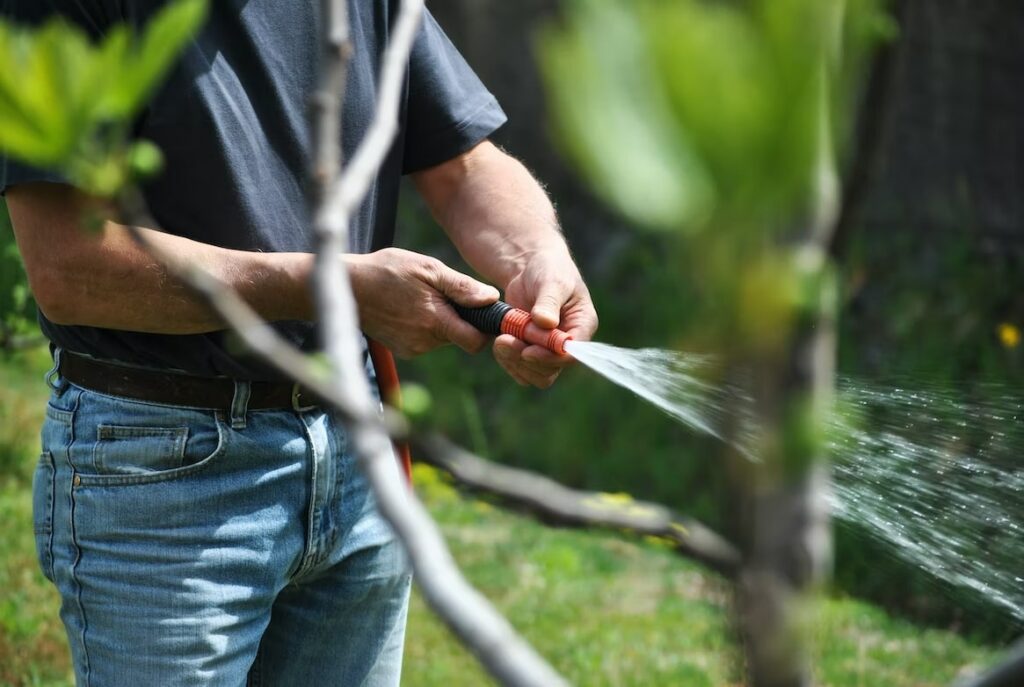
While this may seem like common sense, how many of us actually know how much water a tree needs? As much as we’d care to admit, we often give trees however much water we feel that they need without putting much thought into it.
You may be surprised but giving your tree the right amount of water can make a notable difference in helping it grow faster.
So, now you may be wondering – how much water does my tree need to grow fast? Well, this depends on your soil conditions, rainfall, and temperature.
You’ll also want to consider the various growth stages that your tree is at. Regularly watering young trees helps them reach their full potential and maximize their growth.
When trees are only 1 to 2 years old, they need more water to be able to focus on growing strong and healthy roots. It’s recommended that young trees get about 20 gallons of water each week.
Since pouring 20 gallons of water in a single session can be a bit much, you can spread it over the course of the week. You can do 5-gallon waterings across 4 days.
Generally, you’ll want to water your tree around 4 to 5 days a week. You can test whether the water has made it down deep enough by performing the screwdriver or chopstick test.
This entails poking a screwdriver or chopstick about 8 or more inches deep into the soil to check whether it has gone down to the roots.
If you’re having difficulty driving the screwdriver or chopstick into the ground at around 6 inches deep, this is a sign that you have to water a bit more.
While this is a relatively good tip, this may not be applicable for larger and more established trees.
This is because they’re got big and deep root systems, so it’ll be hard to find a screwdriver or chopstick that’s long enough to do this test.
Alternatively, you’ll want to use your gardener’s sense. This requires you to discern if the soil is thirsty by checking if it feels or looks dry.
If the soil is feeling coarse and hard or looks like it’s cracking, these are signals that the soil lacks moisture.
Other than that, you’ll want to water more frequently during drier seasons such as summertime.
Smaller trees can easily be watered through a hose or watering can. For bigger trees, you can use soaker hoses or drip irrigation systems to provide a steady stream of water directly to the tree’s roots.
6. Add a layer of mulch around the trees
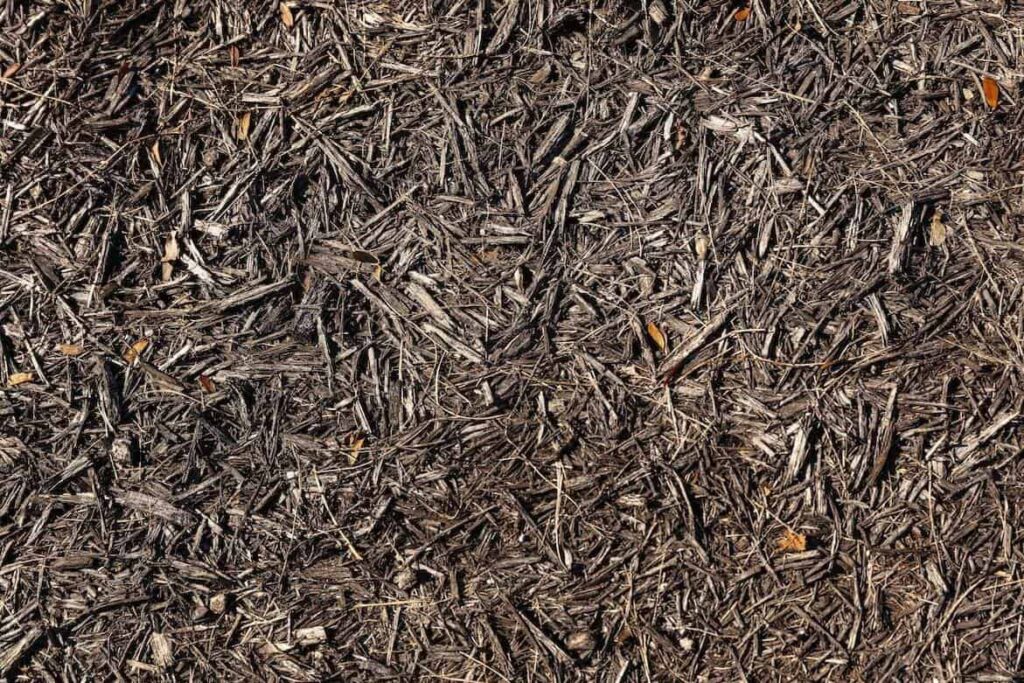
Mulch isn’t just for crops and raised beds. Its beneficial properties can also help provide a variety of advantages to boost your tree’s growth.
First of all, mulch does a great job at water retention and moisture conservation. Thanks to its ability to increase water infiltration, this slows down evaporation.
In turn, this gives your tree enough time to leisurely take in water. It also prevents the soil from drying out which is a great plus if you live in a warmer climate or during hotter seasons.
Apart from that, it acts as a layer of protection in preventing weeds and grass from growing nearby. This protective boundary shuts down any possibility of competing against resources.
Also, since it’s organic matter, mulch boosts the nutritional content present in the soil. As it composes, it improves the soil structure and enhances fertility.
In fact, upgrading your soil properties gives your young tree a great number of additional nutrients to grow healthier and stronger.
Now, the question is – what kind of mulch should I be giving my tree and the soil surrounding it?
For organic mulches, many tree care professionals suggest using the following:
- Compost mixes
- Cocoa hulls
- Wood chips
- Pine needles
- Hardwood bark
- Softwood bark
Planter’s Tip: Avoid inorganic mulches as they don’t have sufficient nutrients to beneficially improve soil properties. They also don’t decay, which could bring about problems in the future.
Be wary, though, about how much mulch you put in so as to not accidentally suffocate the tree’s root system. A general rule of thumb is to only have about an inch or two worth of mulch.
You’ll also want to avoid putting the mulch too close to the trunk to prevent mistakenly causing the tree to decay. Provide a distance of about 3 to 10 inches between the beginning of the mulch and the trunk.
The lifespan of mulch is typically 5 years. Though that’ll still depend on a variety of factors such as your area’s weather conditions and sun exposure, among others.
Having said that, it’s vital that you check in on your mulch. If it looks similar to when you first distributed it on the soil, then it’s most likely good for another year or so.
At most, gardeners typically replace their mulch yearly. While you can mulch twice a year if you’d prefer, it’s a tad more tedious, expensive, and not entirely necessary.
7. Prune your trees periodically
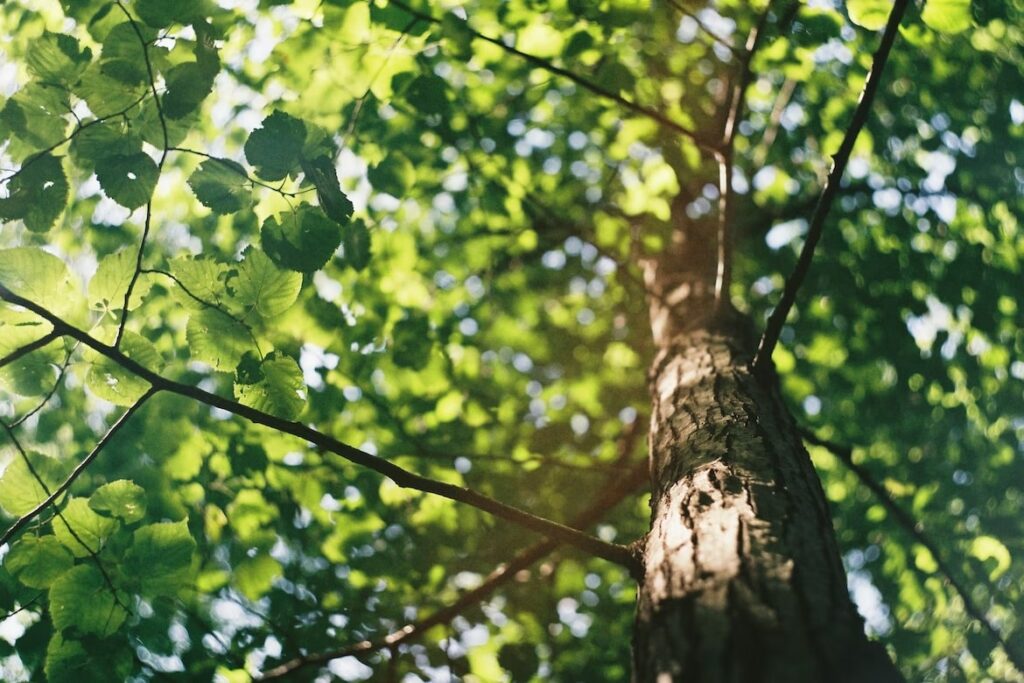
While pruning and trimming both involve cutting away pieces of the tree, they’re two different activities that help keep your tree in good condition along with promoting strong and healthy growth.
Pruning is done less frequently and entails removing large chunks of unnecessary, loose, diseased, and dead branches. This aids in protecting your tree against diseases and pests.
On the other hand, trimming entails simply removing overgrown branches to help regulate the shape and size of the tree. Hence, it’s done more often to prevent it from growing out of control.
One of the biggest benefits of pruning your tree is it makes way for new growth. By removing all the unwanted branches, it gives your tree more room to thrive.
Aside from that, poor branches are a hazard, which could attract pests and diseases that could even turn into an infestation.
However, if you’re pruning your trees by yourself, it’s important to not go overboard. Excessive pruning could weaken your tree’s branches.
If this happens, it may not be able to carry the weight of snow piling up or withstand harsh winds. Your tree may also be spending too much time and energy trying to regrow its canopy.
As much as possible, it’s best to leave tree pruning to the professionals. Given their expertise, they’ll know exactly what to do for your tree.
8. Provide root simulators
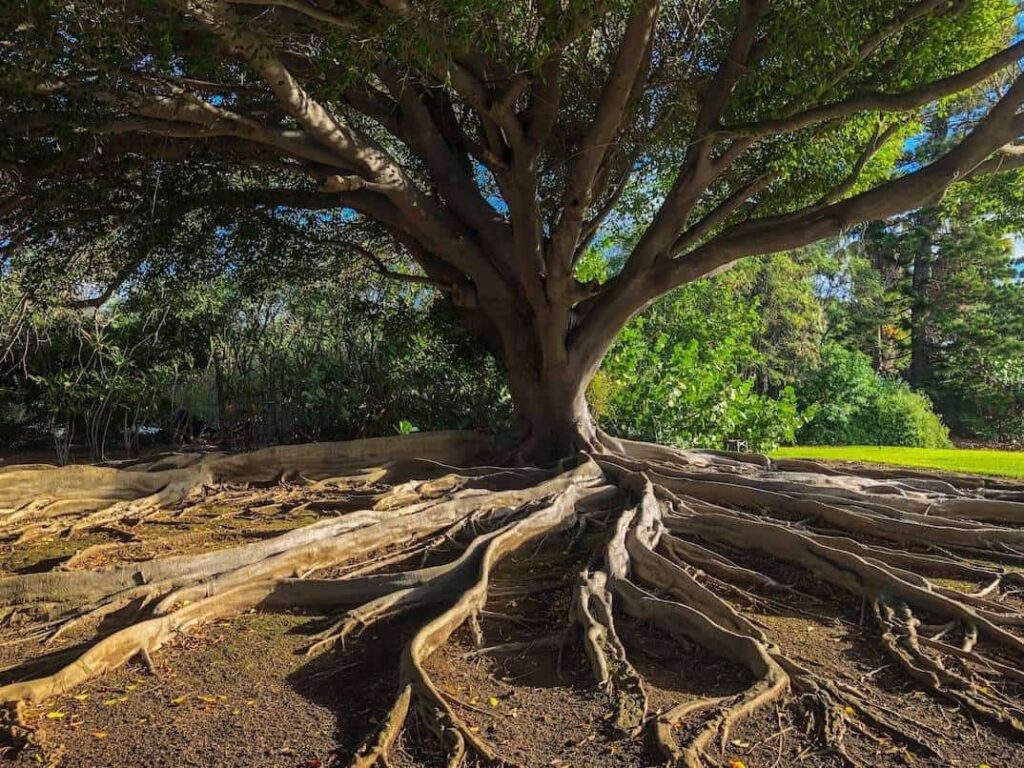
Just as the name suggests, a root stimulator helps boost root growth, especially in young trees that are just developing their root system.
What’s great about root stimulators is that they’re made of hormones that mirror what’s naturally produced by plants instead of harsh chemicals.
Hence, root development comes at a natural pace instead of force. As a result, this gives your tree enough time to leisurely grow its roots, allowing it to develop heartily and sturdily.
Root stimulators usually contain auxin, a hormone that plants produce on their own when growing. Derived from this is Indole-3-Butyric Acid (IBA) which is specifically known for helping increase horizontal root growth.
It’s interesting to note that the tree’s lateral roots will reap the most as they’re more exposed to oxygen.
Since you’re dealing with a hormone, it’s important to apply exactly as the instructions prescribe. Root stimulators often need to be diluted in water depending on the size of the tree.
Afterward, all you need to do is generously pour around the root of your plants. You can reapply once every other week during the first 6 months after you’ve transplanted your tree.
9. Make sure not to over-fertilize or over-water.
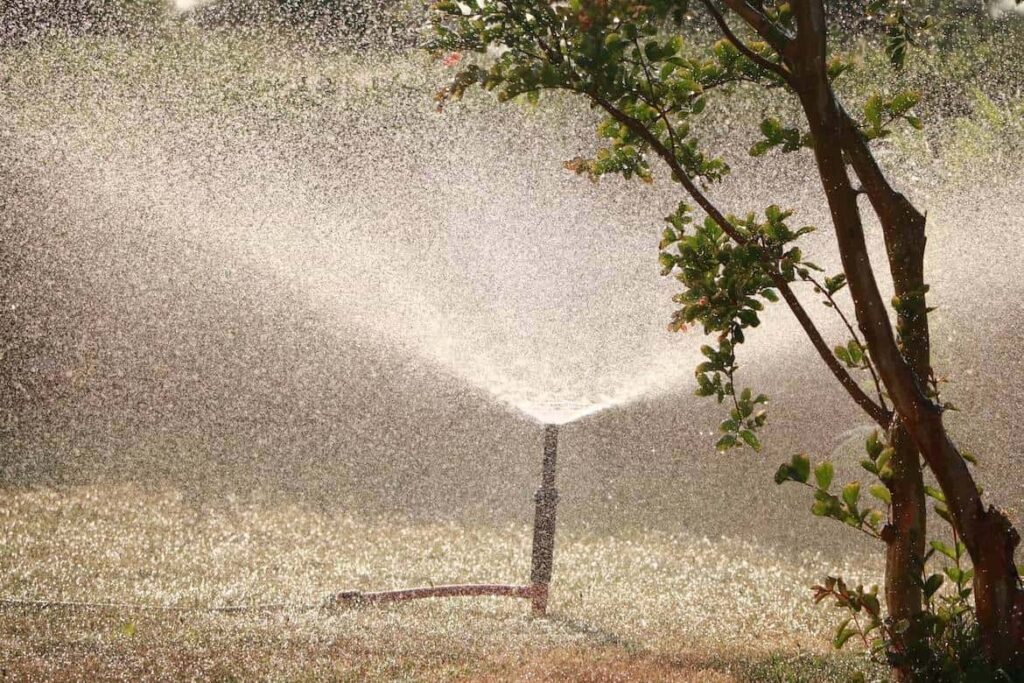
As they say, too much of a certain thing can be bad. The same goes for over-fertilizing and over-watering.
While over-fertilization will help your tree develop a large and wide breadth, this won’t be reflected in the roots. You’ll be given a jaw-dropping canopy, but at a rather hefty cost.
Over-fertilizing could increase the risk that your tree develops a frail root system. This could result in it unable to hold itself up properly, especially when windy.
This could develop into a safety hazard during stormy weather as torrential rain and wind could uproot your tree or cause it to fall over.
Hence, it’s vital to conduct a soil test before introducing any type of fertilizer. This way, you can easily verify what types of nutrients and minerals your soil does and doesn’t need.
When applying fertilizer, especially for young trees, you’ll also want to match the pace of their growth and steadily introduce additives that won’t put them into shock.
Similarly, you don’t want to over-water your tree either. Constantly wet soil tends to compress due to gravity and the lack of air pockets.
As a result, there won’t be enough air circulation for your tree to breath, ultimately suffocating it. These conditions also promote the growth of harmful bacteria and fungi as they’re known to love wet and dark environments.
There also won’t be enough space for nutrients and minerals to travel through the soil. This could hinder or completely withhold the uptake of beneficial resources to the roots.
Your tree also won’t be able to grow quickly and develop properly because there isn’t ample space for it to develop roots. Due to soil compaction, the roots will have a harder time penetrating through which inhibits growth.
10. Protect your tree from damage
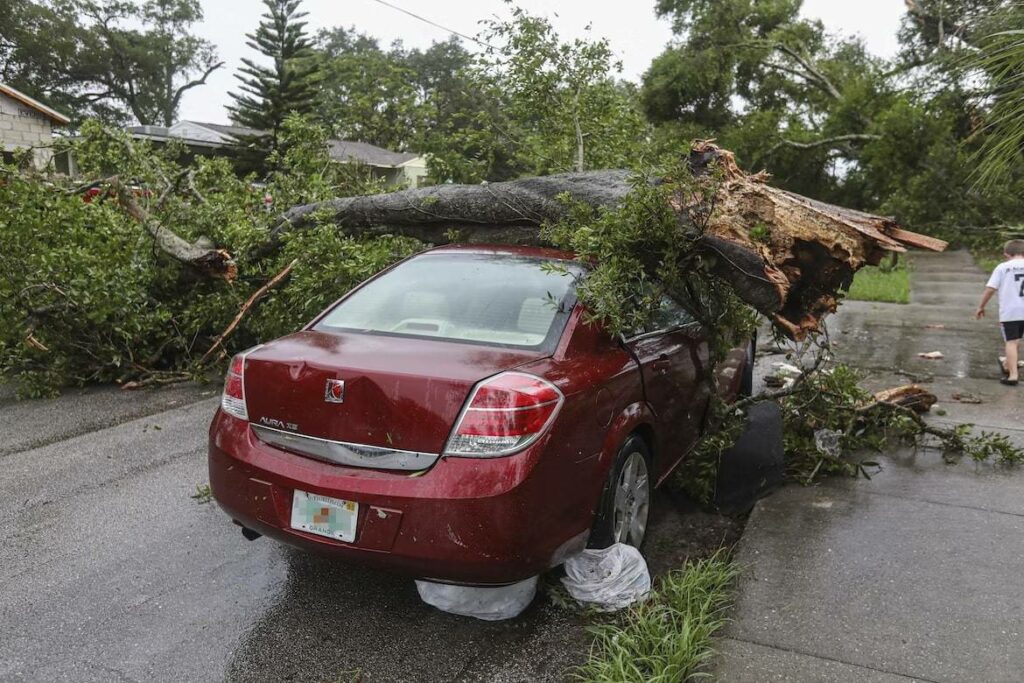
To make your tree grow faster, you’ll want to protect it from damage. This is because any type of harm done onto a tree can bring about negative effects on its health, some for the long-term.
While trees may look sturdy, especially when they’re already matured and well-established, their bark is actually very sensitive.
For example, thinner barks are more prone to sun scalding. Even trees with thicker barks aren’t immune to getting windburn which is when plants suffer from moisture loss from their leaves due to the intense cold.
Other than that, your young tree could get harmed by wildlife such as deer or squirrels.
All of these could cause irreparable damage on your tree, especially if it’s just developing its root system. As a result, your tree will devote all of its energy and resources into healing rather than growing.
To help protect your tree, most gardeners recommend sheltering its bark with hard, cylindrical plastic encasings. These are typically left for about 5 years or until the tree’s diameter is too large for the tube.
On top of protection, these encasings also help trap warmth and moisture which will aid in a speedy growth.
FAQs
You need root stimulators specifically to boost root growth. Meanwhile, fertilizers are used to increase nutrient content.
Excessive use of fertilizers is unnecessary as too many nutrients in the soil. This will cause uptake difficulties, pH imbalances, burns, and chemical build-up, among others, that’ll negatively affect the growth of your plant.
Natural fertilizers that work the best at boosting your tree’s development typically contain the following ingredients:
•Composted chicken manure
•Feather meals
•Blood meal
•Soybean meal
Trees need large amounts of N-P-K or nitrogen, phosphorus, and potassium. They all help stimulate root development, aid in photosynthesis, and boost overall health.
Adding mulch and providing trees with enough water already gives stimulates their growth. Adding fertilizer helps give them extra nutrients to easily reach its full potential.
Some of the fastest growing trees gain anywhere from 2 to 10 feet of height each year in ideal conditions. These include:
| Tree Type | Average Growth Rate Per Year | Height at Maturity |
| Rainbow Eucalyptus Tree | 3 to 5 feet | 60 to 80 feet |
| Lombardy Poplar | 8 to 10 feet | 40 to 60 feet |
| Tulip Poplar Tree | 6 feet | 70 feet |
| Hybrid Poplar | 5 to 8 feet | 40 to 50 feet |
| Weeping Willow | 4 to 8 feet | 30 to 40 feet |
| Cleveland Pear Tree | 4 feet | 30 to 40 feet |
| Thuja Green Giant | 2 to 5 feet | 30 to 40 feet |
| Autumn Blaze Red Maple | 2 to 5 feet | 40 to 50 feet |
| Dawn Redwood | 4 feet | 70 to 100 feet |
| Black Bamboo | 3 to 5 feet | 15 to 30 feet |
| Heritage River Birch | 3 to 4 feet | 50 to 80 feet |
| Leyland Cypress | 3 to 4 feet | 60 to 70 feet |
| Arborvitae Green Giant | Up to 3 feet | 50 to 60 feet |
| Baby Giant Arborvitae | 3 feet | 14 feet |
| Mexican Fan Palm Tree | 3 feet | 50 to 70 feet |
| Quaking Aspen | 2 to 3 feet | 40 to 50 feet |
| Pin Oak | 2.5 feet | 60 to 70 feet |
| Paper Birch | 1.5 to 2 feet | 50 to 70 feet |
| River Birch | 1.5 to 2 feet | 60 to 80 feet |
Got any other tips or experiences in making trees grow faster? Share your tips with us in the comments below!



